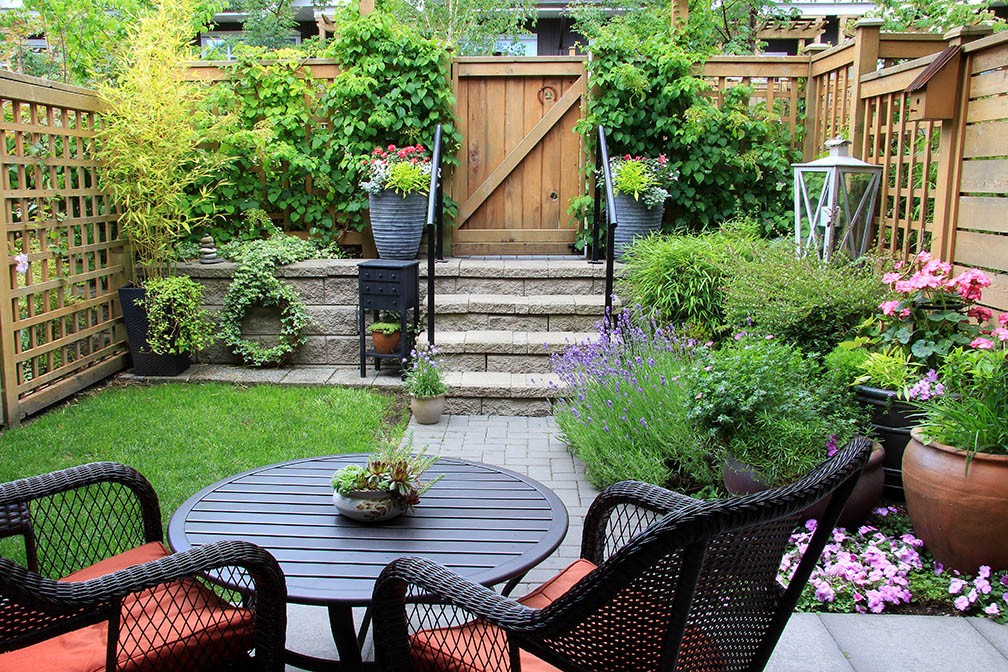Living With a Small Green Space: How to Make the Most of a Smaller, Intimate Yard
 It’s great to have a yard in this day and age, but so many new developments in the city have limited green space for you to let your imagination run wild. If you’re wondering what you can do with your patch of green space or small yard, here are a few options for making it aesthetically appealing and still maximizing its potential.
It’s great to have a yard in this day and age, but so many new developments in the city have limited green space for you to let your imagination run wild. If you’re wondering what you can do with your patch of green space or small yard, here are a few options for making it aesthetically appealing and still maximizing its potential.
Pick A Centerpiece
In order to stretch the look of your green space, try adding a centerpiece or focal point that will draw the eye and instantly improve your yard’s appeal. Whether you decide on a planter, a birdbath or an awning covered in vines, a unique piece will work to distract from the limitations imposed by your yard. A centerpiece may do nothing to expand your garden space, but by changing the way you view it, it will make all the difference in how you feel about it.
Make It Match
Your garden or back green space is going to look a whole lot smaller if it’s eclectic style diverges greatly from your home, so keep the two aligned. If there’s a selection of colors and style you use in the room that faces your yard, use them outdoors! It’s also important to make it something you’ll really use. As landscape architect Amber Freda of Amber Freda Home & Garden Design says, “A plain dining table with wooden chairs won’t entice you to use it very much, but really comfortable lounge seating will.”
Keep It Clean
It’s a well-known fact that clutter in any enclosed space will instantly make it look smaller, and it’s no different when it comes to your yard. Instead of jamming an excessive amount of stuff into your small space, keep it simple and decide exactly what you want to get out of the area, whether it’s a vegetable garden or a comfortable place to sit. In keeping with clutter free, you’ll also want to make sure you keep any invasive or aggressive plants from making themselves too comfortable!
It may seem limiting to have an undersized green space, but by deciding what you want to get out of it and creating a central point of interest, you’ll be well on your way to a comfortable place.

 Last week’s economic releases included readings on inflation, core inflation pending home sales and multiple reports from the labor sector. Weekly readings on mortgage rates and new jobless claims were also released. Pending home sales were lower and weekly jobless claims rose, which illustrates continued volatility in the economic sector.
Last week’s economic releases included readings on inflation, core inflation pending home sales and multiple reports from the labor sector. Weekly readings on mortgage rates and new jobless claims were also released. Pending home sales were lower and weekly jobless claims rose, which illustrates continued volatility in the economic sector. Are you about to become a first-time home buyer? If so, there’s a lot to get excited about. You’ll soon be a home owner, able to customize and improve your living space as you see fit.
Are you about to become a first-time home buyer? If so, there’s a lot to get excited about. You’ll soon be a home owner, able to customize and improve your living space as you see fit.